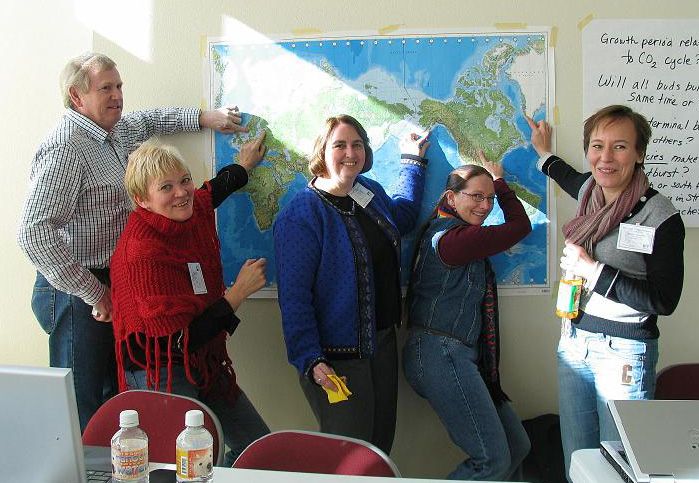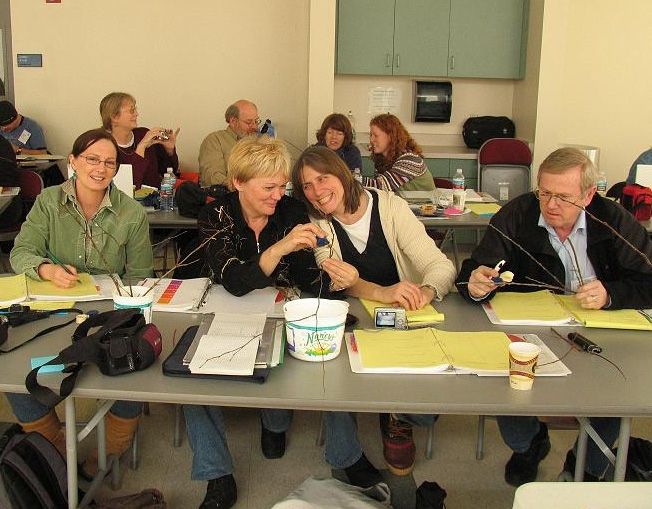Led by Dr. Elena Sparrow and sponsored primarily by the U.S. National Science Foundation (NSF), the Seasons and Biomes Project engages pre-college teachers and students in climate change research to learn science and to participate in the International Polar Year.

It employs methods used in the international Earth/environmental science Global Learning and Observations to Benefit the Environment (GLOBE) program (http://www.globe.gov), including studying Earth as a system and partnering teachers and students with scientists in ongoing physical and biological science investigations.
For this project, schools are organized by biomes and not by countries. Biomes include taiga, tundra, temperate and tropical deciduous forests, grasslands, savannah, hot and cold deserts, and agricultural and urban locales. Existing GLOBE measurements or protocols are being adapted to each biome and new protocols on fresh-water ice and mosquito phenology are being added for the Arctic/northern and tropical/equatorial regions, respectively.
The March workshop at UAF focused on the tundra and taiga biomes, freshwater ice freeze up and break-up and vegetation phenology protocols, IPY, and best teaching practices. Participating educators came from Argentina , Canada , Estonia , Germany , Greenland , Mongolia , Norway and Switzerland , as well as from many parts of Alaska and several other US
In addition, there were some very special participants: six former GLOBE students who are now college undergraduates, from Argentina , Bahrain , Cameroon , the Czech Republic , Thailand , and the US

An unusually wintery March in Fairbanks

 Thirty-eight teachers and teacher educators from around the world gathered at the University of Alaska Fairbanks (UAF) campus in late March to participate in a professional development workshop sponsored by UAF’s Monitoring Seasons Through Global Learning Communities Project (“Seasons and Biomes Project”), which is part of University of the Arctic’s International Polar Year (IPY) Education Outreach Cluster.
Thirty-eight teachers and teacher educators from around the world gathered at the University of Alaska Fairbanks (UAF) campus in late March to participate in a professional development workshop sponsored by UAF’s Monitoring Seasons Through Global Learning Communities Project (“Seasons and Biomes Project”), which is part of University of the Arctic’s International Polar Year (IPY) Education Outreach Cluster.